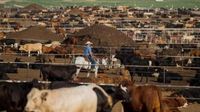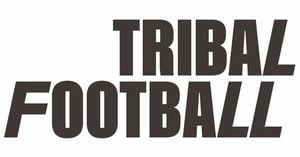In a striking pivot from his administration’s earlier trade stance, President Donald Trump has signed an executive order rolling back tariffs on more than 100 imported food products, a move aimed squarely at tackling rising grocery prices that have become a flashpoint for American households and a thorny political issue for the White House.
The executive order, signed on November 14, 2025, carves out a wide range of items from the baseline 10% import tariff that had been imposed on goods from all countries, with additional levies on select trading partners. The newly exempted products include coffee, bananas, beef, avocados, tomatoes, coconuts, mangoes, and a variety of other fruits, spices, nuts, grains, and specialty items. The exemptions took effect retroactively at midnight on November 13, as confirmed by the White House.
According to BBC, the administration stated that these products cannot be produced in sufficient quantities domestically, so lifting the tariffs would not harm American industries. President Trump, speaking to reporters on Friday, explained, “These are products not produced in the US, so there’s no protection of our industries, or our food products.” He added, “We just did a little bit of a rollback on some foods, like coffee as an example, where the prices of coffee were a little bit high. Now they’ll be on the low side in a very short period of time.”
This policy reversal comes as the Trump administration faces mounting pressure over the cost of living, particularly after the Republican Party’s poor performance in the previous week’s elections. While Trump has long argued that his tariffs would not lead to higher prices for American consumers—and even dismissed affordability concerns as a “con job” by Democrats—he has recently shifted focus to address the escalating cost of groceries, especially beef, which has soared to record highs. As reported by BBC and other outlets, grocery prices are up 2.7% from the previous year as of September 2025, despite overall inflation cooling more than analysts had expected.
Trump’s move to ease tariffs is not limited to a few select goods. The White House released a comprehensive list of more than 100 products now exempt from levies. These include beverage crops like coffee, cocoa, black and green tea, and vanilla beans; beef products such as high-quality cuts, bone-in and boneless, corned beef, and various preserved varieties; an array of fruits and vegetables like avocados, bananas, coconuts, mangoes, pineapples, plantains, tomatoes, peppers, guavas, limes, and acai; spices ranging from allspice and cardamom to turmeric and saffron; and specialty items like Brazil nuts, cashews, macadamia nuts, pine nuts, barley, capers, miso, tapioca, taro, and water chestnuts.
The administration has also announced plans to lower import taxes on coffee and bananas as part of new trade agreements with four Latin American countries. Both Trump and Treasury Secretary Scott Bessent have publicly vowed to decrease coffee prices by 20% in the United States during 2025, a promise aimed at winning back consumer confidence and political capital.
However, the story of food prices in America this year is inseparable from the dramatic events in the cattle market. As reported by Farm Journal and CattleFax, 2025 has been a historic year for cattle, with the tightest numbers in 70 years driving cash and futures prices to all-time highs. The peak in cattle futures occurred on October 16, but just weeks later, the market experienced a sharp correction—live cattle dropped by $30 and feeder cattle by nearly $70. This crash, analysts say, was not rooted in supply and demand fundamentals but rather in a shift in market psychology triggered by President Trump’s announcement of a plan to lower beef prices for consumers.
Don Close, a senior animal protein analyst with Terrain, emphasized that the fundamentals—tight domestic supplies—remain unchanged. “Certainly with domestic supplies, they have not changed in any fashion when you’re looking at the tightest cattle numbers that we’ve had in 70 years,” he said. Despite high retail beef prices, there’s no evidence of consumers trading down to cheaper proteins, and demand has not eroded. The real change, according to analysts, was the fear among speculative traders of government intervention, which led to a rush to liquidate positions and a subsequent market plunge.
Adding fuel to the fire, the Trump administration announced a quadrupling of the Tariff Rate Quota for beef imports from Argentina—from 20,000 metric tons to 80,000 metric tons. While this increase represents only a modest addition to net beef supplies (about three-tenths of a pound per capita), it triggered further selling in cattle futures. Patrick Linnell, director of market research at CattleFax, explained, “That change... would represent around 132 million lb. And really, that comes down to about three-tenths of a lb. per capita to net beef supplies.”
The response from cattle industry groups was swift and scathing. Colin Woodall, CEO of the National Cattlemen’s Beef Association, criticized the administration for failing to secure reciprocal market access in Argentina and importing more beef from countries with lower food safety standards. “Over the past five years, Argentina has sent over $800 million worth of their beef into the U.S. market, and they’ve only accepted $7 million of our beef into their market,” Woodall pointed out. Justin Tupper, president of the U.S. Cattlemen’s Association, added, “I think we want to be able to play on the same level playing field. And I don’t think that happens with Argentina and Brazil. And again, I really don’t think it’s going to lower prices.”
Industry leaders also warned that government intervention could disrupt the free market and undermine the gains cattle producers have worked hard to achieve. “We don’t want government intervention coming in and messing with that and taking away these great opportunities we’re seeing,” Woodall said. Tupper echoed, “It’s an industry that wants to work on competition and merit based, and we can do that if we make sure we don’t get too many outside interests—the government being one.”
Meanwhile, the administration has taken other steps to influence beef prices. On November 7, Trump announced on Truth Social that the Department of Justice would investigate the nation’s meat packers for alleged “illicit collusion, price fixing, and price manipulation.” Bill Bullard, CEO of R-CALF, welcomed the probe, alleging that packer concentration has led to both artificially depressed cattle prices and inflated prices for consumers. “Both the producers on the beginning of the supply chain and consumers at the end of the supply chain were exploited as a result of this monopolistic marketing structure,” Bullard stated. However, Derrell Peel, a livestock marketing specialist at Oklahoma State University, noted that past investigations have found only a small negative price impact from market concentration, outweighed by cost efficiencies.
Looking ahead, market analysts like Close and Peel suggest that the path to lower beef prices will be long and uncertain. “It took several years of drought and other impacts to get us here,” Peel explained. “It’s going to take several years for us to grow our way out of this situation.” Close speculated that, once the market stabilizes, cattle prices could revisit their highs by spring or summer 2026, possibly reaching $240 to $245 per hundredweight.
For now, the Trump administration’s tariff rollbacks and beef market interventions have injected both relief and volatility into the food sector—leaving consumers, producers, and policymakers alike watching closely to see what comes next.




